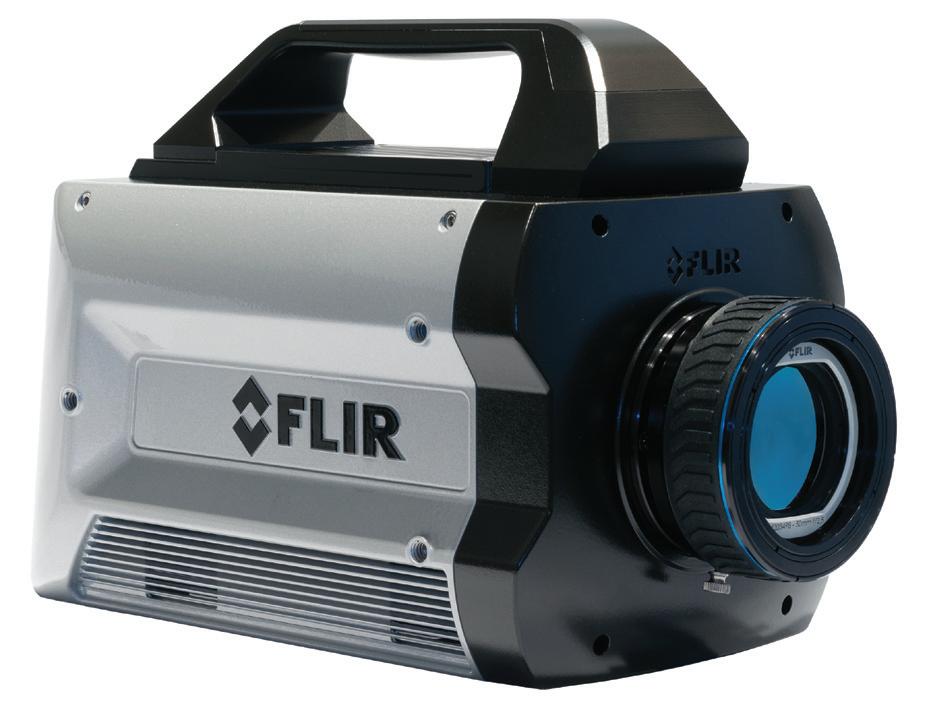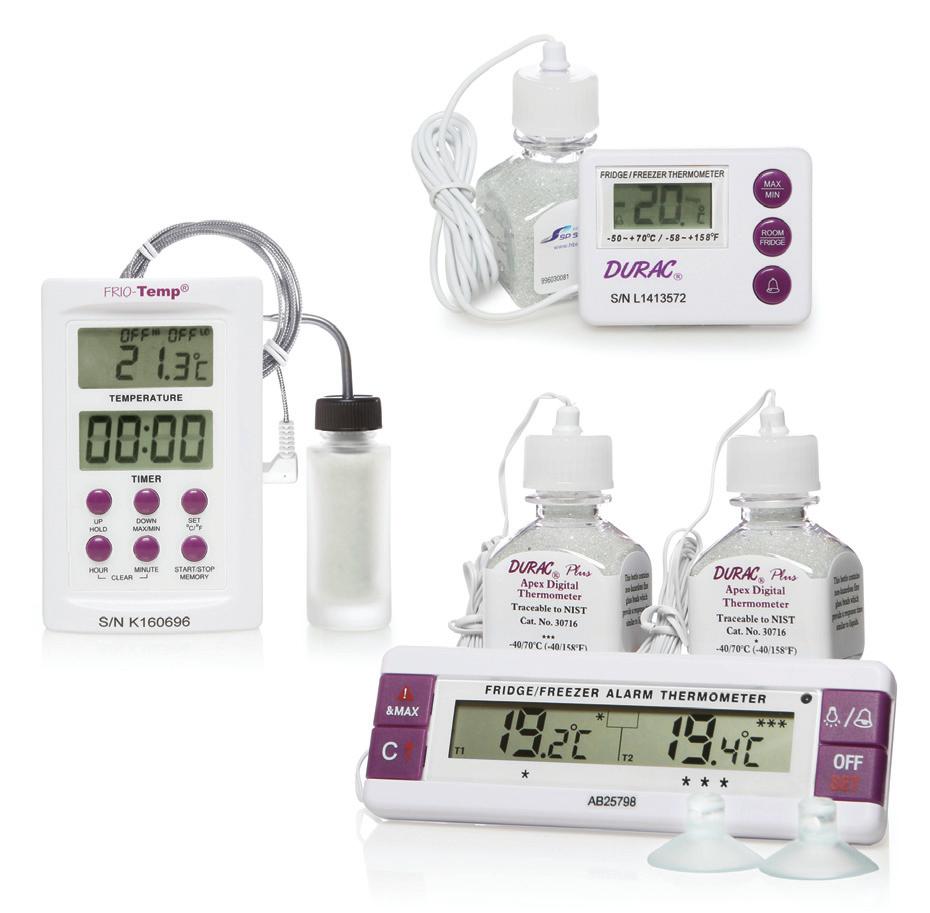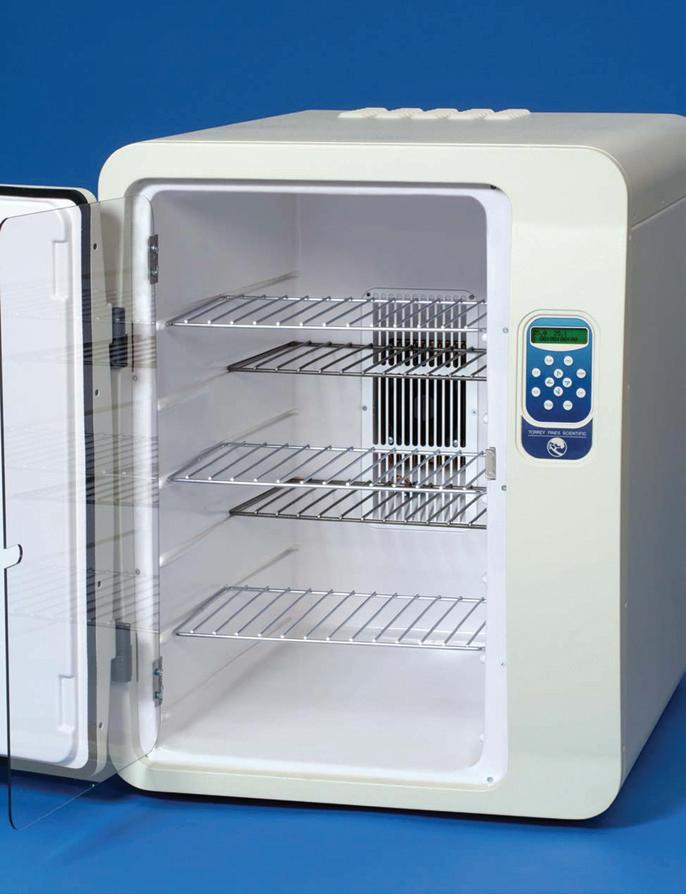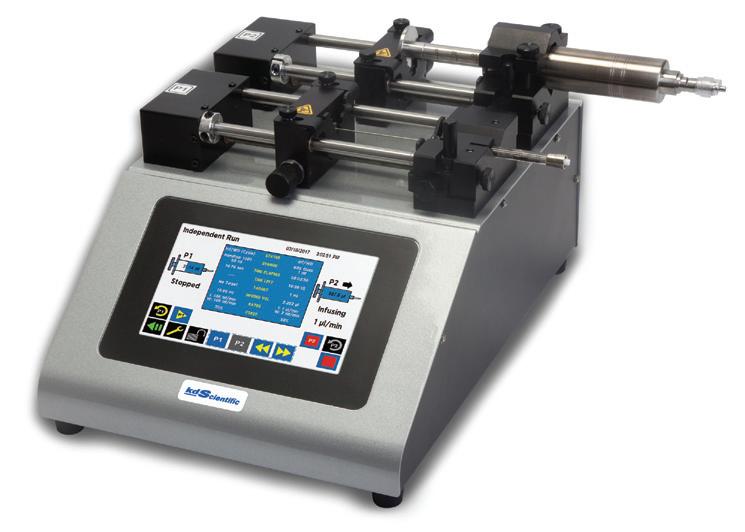
7 minute read
new PRoducts
Cameras FLIR Systems, Inc. has
introduced two new high-speed, longwave thermal cameras, the FLIR X6900sc SLS and FLIR X8500sc SLS for science and research applications. The new cameras are based on FLIR’s highest-speed, midwave thermal camera models, but feature strained layer superlattice (SLS) detectors filtered for longwave infrared. These SLS detectors produce high frame rates and wide temperature ranges, as well as integration times that are more than 12 times faster than their midwave counterparts. The X6900sc SLS high-speed longwave thermal camera captures full-frame 640×512 thermal images at 1004 frames per second, at temperatures up to 3000 degrees Celsius. The FLIR DVIR™, a removable storage device that comes standard with the X6900sc SLS, saves up to 26 seconds of data to on-camera RAM without dropping frames. With advanced triggering options and an automatic, fourposition filter wheel, this camera offers the functionality to stop motion on high-speed events both in the lab and at the test range. The X8500sc SLS records up to 181 frames per second of full 1280×1024 HD thermal imagery. This camera also features the FLIR DVIR which saves up to 36 seconds of data to on-camera RAM without dropping frames, and can measure temperatures up to 3000 degrees Celsius. The X8500sc SLS
Advertisement
streams high-speed, 14-bit data simultaneously over Gigabit Ethernet, Camera Link, and CoaXpress for live viewing, analysis or recording. Web: www.flir.com/science

Thermometers H-B Instrument – SP Scienceware has released its Electronic Verification Thermometers calibrated specifically for freezers, refrigerators and incubators. Equipped with liquid or glass bead filled bottles which mimic the sample, these thermometers deliver temperature verification without the risk of sample contamination. Multiple models are available with features including dual zone, single or multiple displays, alarms and more. Web: www.belart.com
Incubators Torrey Pines Scientific EchoTherm™ vibration free bench top chilling incubators are Peltier-based for heating and chilling, and are vibration-free making them ideal for doing protein crystallizations. They
have 100 litre capacity and can hold 66 assay plates without stacking. Other applications include incubating marine samples below room temperature, enzyme reactions and deactivations, hybridizations, ligations, and general lab incubations. There are two models. The IN55 is fully programmable for temperature cycling crystals for better growth while the IN50 is simple digital. Both models feature temperature ramping up and down. Chamber size for both is 100 liters. They are settable form 4.0ºC to 70.0ºC and feature temperature control to ± 0.1°C, and can be controlled at or near room temperature. Chamber size is 24″ high by 20″ deep by 14″ wide and come with eight stainless steel racks with room for twelve racks. Racks are split in the middle for variety of sample sizes. Web: www.torreypinesscientific.com.

Syringe Pumps KD Scientific offers its new Gemini 88 plus dual rate syringe pump. This unique pump is really two individual syringe pumps in one instrument, providing two independent pumping channels linked through hardware and software. The pump can infuse simultaneously at different rates, or infuse with one syringe and withdraw with the other. When combined with a valve box, it provides the continuous delivery of a peristaltic or piston pump with the accuracy, absence of pulsation and low flow rates of a syringe pump. This functionality allows continuous infusion or withdrawal, 24 hours a day, 365 days a year with the accuracy and low flow of a KD Scientific syringe pump. Other key features include a large touch screen display for quick and easy setup, high
or low pressure operation and continuous fluid delivery. The instrument is compatible with a wide variety of syringes. Web: www.kdscientific.com

Flow Cabinets Air Science Purair Horizontal Laminar Flow Cabinets are designed to protect equipment and other contents of the work zone from particulates, for applications sensitive to such contamination. The cabinets are designed for desktop use, but may be installed on an optional mobile base stand. Users can choose from a standard powder coated interior or stainless steel interior (-SS models). They come in 2′ , 3′, 4′, 5′, 6′ and 8′ widths in standard and extra tall heights for general applications. Some of the other features and benefits of the Purair Horizontal LF Series include: a perforated rear wall to reduce work surface turbulence by removing some of the airflow to the rear, a lip on the rear to protect the ULPA filter from spills, and high capacity air handling that delivers flow velocity of 0.350.45 m/s or 70-90 fpm. Other accessories are an IV bar, service fixtures, base stand, UV lamp and front door/cover. The hoods are shipped fully assembled. No installation is required; just plug them in and use them. Web: http://www.airscience.com/ laminar-flow-hoods
The Future is already Here
one needs only to turn on any modern communication device to understand how interconnected the world has become, and to appreciate the explosion of information in all areas of the life sciences and medicine. We are better able to communicate about much richer raw data sources than ever before, and this creates some interesting opportunities for the future of the pharma-related biotechnology industries.
One direction that will have significant impact is the development of artificial intelligence. More specifically, the topics of deep learning and machine learning will be focal points, and Canada is well positioned in these areas. When it comes to pharma-related biotechnology, desk top modeling platforms already offer utility in representing putative receptor sites and searching for structures with potential for selective binding. Such approaches are usually quite focused as defined by the user, and tend to be limited in the volume of space and the permutations that can be searched at high resolution. Such methods are also useful for directing the choice of compounds and biomolecules and should be explored for value as therapeutic agents, but this is a crutch for the traditional paradigm of screening suites of compounds to feed a funnel that selects lead compounds for more detailed evaluation.
Now imagine an autonomous machine platform that can integrate information from thousands of publications about the structure and behavior of a particular receptor including the complexity added by considering energy landscapes, and that can concurrently search through thousands more of unrelated publications for sets of structures that may have utility in binding. This ability to sift through all the scientific literature represents a form of data mining at a scale that only now is becoming possible.
It is not just the scale of the data though, as there must be interpretation of the meaning of data and the relational information associated with molecular interactions. This is the machine learning aspect, where simulated intelligence that searches for patterns can inspect data that is far too great for an individual to manage. The approach takes on even more significance when one considers scaling of molecular complexity from small molecule pharma to biopharmaceuticals. But what about concerns regarding the quality of the data, and the significant potential that there is data that may be fabricated? An interesting twist that has already been demonstrated by machine learning is the ability to detect fraudulent data and concocted results, which may be essential given the directions taken in a world of “alternate facts”. A second direction again reflects on the access provided by the Internet, but beyond data – to draw in those who create and interpret such data. Imagine an ability to encourage and harvest creativity by drawing on collective problem solving and collective intelligence of a global community. This will seem foreign to anyone operating in the traditional modes of the pharma-related biotechnology industries, where intellectual property and details about processes are carefully controlled to achieve and maintain market position. Yet the biotechnology industry is not dissimilar to numerous other technology-based sectors, and one can see a change in some of these industries to embrace crowd sourcing to stimulate development of new ideas around intractable problems. There will be a balance of interests here, in that there is the potential to lose some control of intellectual property. However, there is a significant gap between the formulation of an idea and the demonstration of reduction to practice, with all manner of non-disclosure and licensing agreements as a buffer along this road. There will need to be some innovation to encourage contributions of high quality, but various software and engineering sectors are already using such approaches with good outcomes. Secondary beneficial outcomes would be the ability to encourage a different public attitude to the secrecy usually attached to pharma-related enterprises, and an opportunity to bridge the industry-academic divide to forge productive relationships and experiential learning.
The potential for such innovation within the pharma-related biotechnology industry is in hand now. My prediction is that there will be rapid uptake of the machine learning opportunity, in particular because it offers another route to overcome the limitations encountered in more traditional approaches of drug discovery and design.
Ulrich Krull is a Professor of Analytical Chemistry and AstraZeneca Chair in Biotechnology, Interim Principal: University of Toronto Mississauga, Interim Vice-President: University of Toronto, Editor - Analytica Chimica Acta, University of Toronto Mississauga


